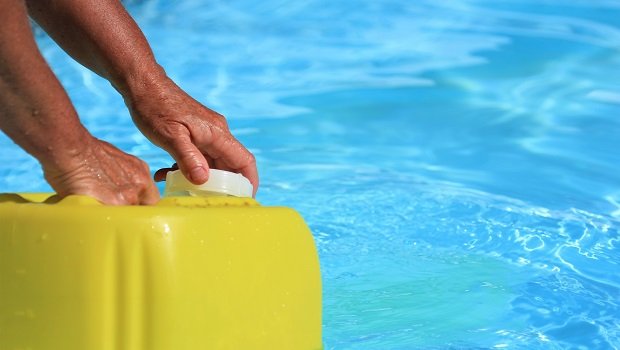A pool shock is a product that helps you keep your water clean and pristine by killing algae and bacteria.
It also helps with the stains on the walls and bottom of your pool. Although many people tend to use bleach, we do not recommend it.

That is because it can damage your pool equipment, including your filter, sand filter, heater, and pipes.
You will have to purchase a chlorinator and add small amounts of chlorine into your pool water.
The chemical will do the trick without damaging your equipment. You can learn about pool cleaning products in detail by visiting All About Pools.
You should consider how frequently you need to replace your pool shock and what maintenance history your pool has.
A lot of maintenance can mean that a high-pressure shock is necessary.
In addition, if your swimming pool has suffered from a lot of leaks or frequent damage, it’s probably time to upgrade.
You should also consider the water quality in your pool and how frequently you need to make maintenance patches.
If your pool is riddled with algae and often gives off a fishy scent, it may be time to invest in a low-pressure shock for the sake of preserving water quality.
However, if your pool is generally clean, a high-pressure shock should be just fine.
Shock treatment has been found to be most effective when the water levels in the pool are at their lowest point, before rains which can wash away chlorine.
We recommend shocking your pool once a week during the dry season and twice a week during the rainy season.
Read Also:
There are several chemicals used in pools for different purposes. The most common is chlorine bleach, which is responsible for keeping a pool clean and clear.
People also use other chemicals like copper sulfate and calcium hypochlorite to keep pools free from algae growth or green water icky organic stuff.
These other chemicals don’t kill bacteria; they simply control the levels of algae or other microbes that could form in your pool if there wasn’t anything to stop them.
Another popular pool treatment is shock, made up of oxidizers like calcium hypochlorite, hydrogen peroxide, and sodium dichloro.
Shock has numerous uses, but the most common is to raise chlorine levels in the pool to kill off bacteria that may have formed or are starting to form.
It also helps if the water has gone cloudy or green because the shock will lower the numbers of algae cells and then help any disinfectant you have faster than if there weren’t any algae.
Once you have all of the information you need about your swimming pool and its specific needs, it’s time to move onto the next step.
Make a list of possible pool shocks that meet all of your criteria. There are sites that review pool shocks and will come in handy with the decision-making process.
You can also compare rates and check out the reviews from previous customers.
First of all, read your pool shock user guide. Also, read the instructions included with your pool shock maintenance kit.
You should never use pool shock when it’s raining or when there’s a lot of moisture in your pool.
That can damage the integrity of your swimming pool. You should also never leave your pool open for too long when you’re using a pool shock to avoid attracting bugs and other unwanted insects.
There are many options to choose from when it comes to pool shock, and you need to do your research before buying something.
Spring and summer often bring an increase in the use of the pool, which means it’s time for your annual spring cleaning!
Now is the time to replace any missing or unused chemicals, including chlorine and salt chlorinator tablets.
Pool shock is an essential part of the pool and spa maintenance routine. It protects the finish on a pool from the effects of chlorine, eliminating stains and film buildup that can show up over time.
Good quality pool shock will have a low chemical strength (such as sodium hypochlorite) with an alkaline pH to reduce staining.